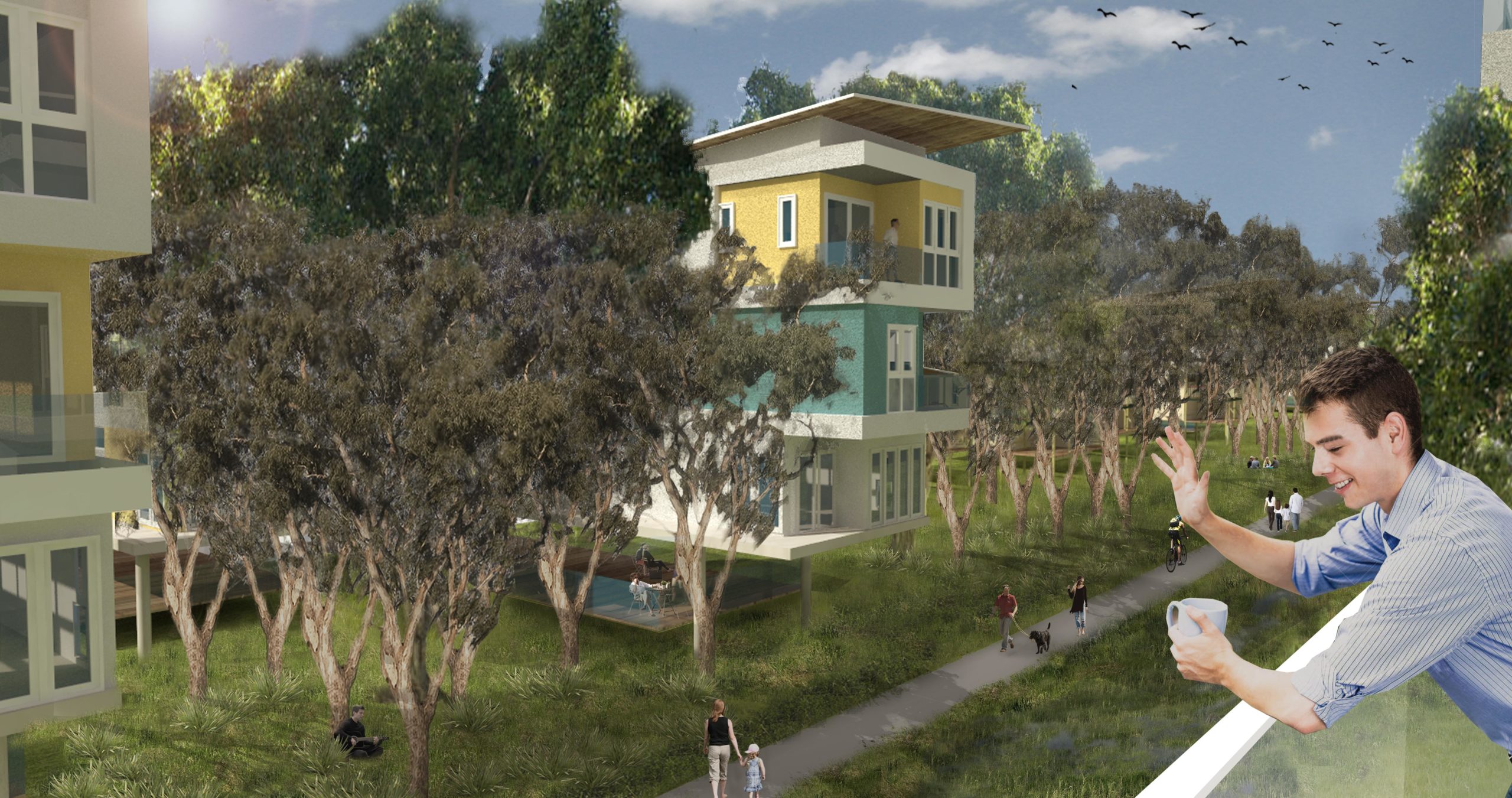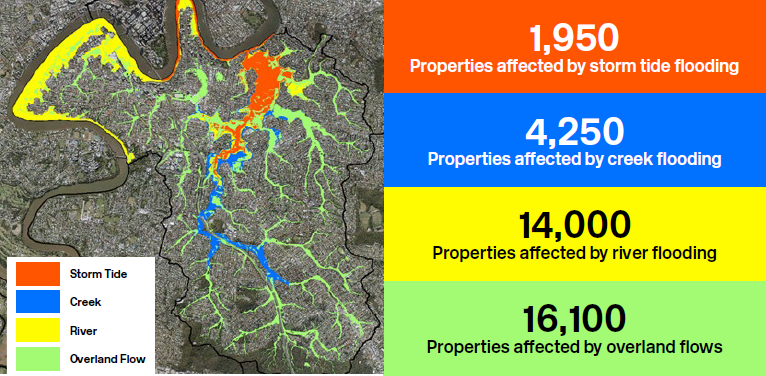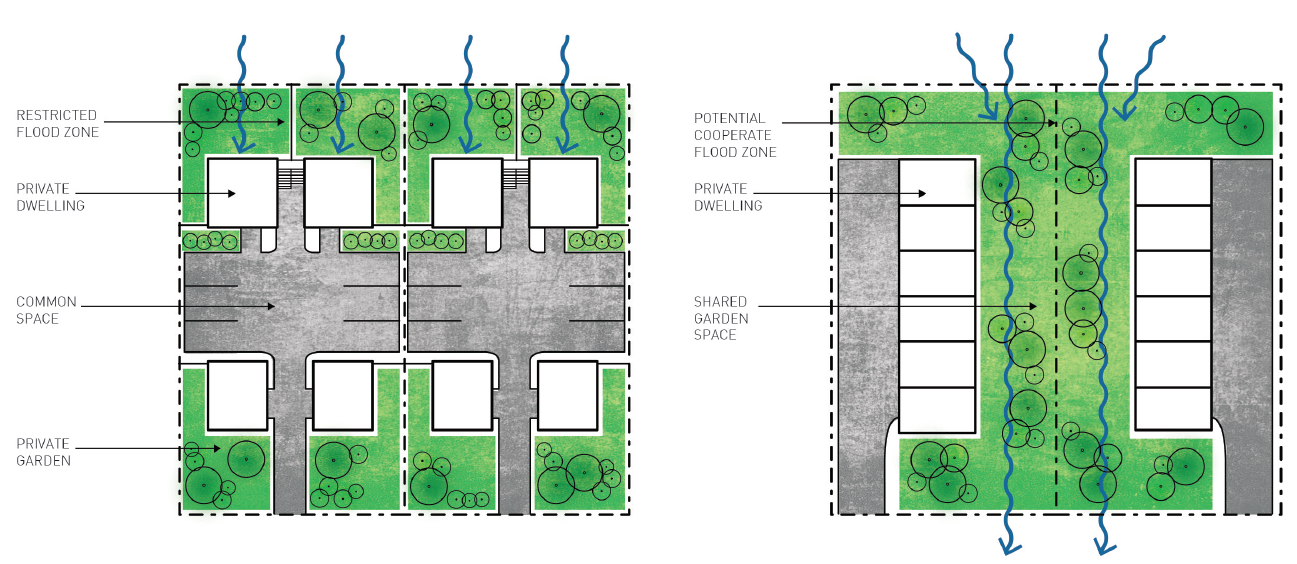Brisbane City Council applies CRCWSC tools to Norman Creek
We are taking another important step in building industry capacity in using and applying CRCWSC research and tools. A new project with Brisbane City Council (BCC) is encouraging broader adoption and mainstreaming of WSC practices.
CRCWSC researchers and UQ PhD students are working closely with BCC to investigate new ways of delivering infill housing typologies in the Norman Creek catchment area, while responding to climate change, impacts such as increased urban heat and flood frequency, waterway health and population growth.

For the project, BCC is using the IRP4 performance evaluation framework, the IRP2 Value Tool and the BCA Tool to develop business cases, and the Scenario Tool to investigate different greening options. BCC also used Tuflow to evaluate the changes in stormwater overland flow impacts that resulted from integrating the proposed infill typologies into the urban fabric.

The outcome will be an integrated case study demonstrating how to use CRCWSC tools to build the business case for water sensitive design typologies, and how to incorporate these solutions into an urban planning framework designed for the catchment. The end result will be improvements to local stormwater drainage and flooding, urban heat, and waterway health impacts.
Building on strong foundations
This Norman Creek project will consolidate the substantial work already completed by BCC and the CRCWSC for Norman Creek. The aim is to develop an economic model that underpins an approach to infill housing typologies, and to develop planning objectives and strategies for how the new infill development typologies can be integrated with land and water planning in the Brisbane City Plan.
An important precursor for the project is Solutions for Norman Creek, a research synthesis discussion paper that proposes flood resilience initiatives for the site, which we released in 2018.
In Time with Water: Design Studies of 3 Australian Cities, released in 2019, also includes a study of Norman Creek and examines how design processes help us understand the underlying and hybrid nature of water systems in our urban environments. By understanding the past, present and possible future conditions of local sites, we can use this knowledge to create multi-purposed, alternative design scenarios for a water sensitive city.

Developing skills and partnerships
The integrated nature of the project will develop cross-disciplinary skills. BCC employees will undertake the studies into urban heat, water cycle fluxes and economics, with support from CRCWSC researchers and UQ PhD students. This approach provides a mechanism for capacity building, upskilling and training opportunities for decision makers and users of model outputs.
The project will also see ongoing collaboration across industry, the private sector and academia, working with architect Nigel Bertram from Monash Art Design & Architecture (and part of our IRP4 project), researchers Steven Kenway from UQ (Project Lead of IRP4) and Sayed Iftekhar from Griffith University (Project Lead of IRP2), and UQ PhD students Mojtaba Moravej and Niloo Tarakemehzadeh.
Having a wider impact
Importantly, the management strategies developed in this project will represent a potential scaling up of water sensitive urban design within the urban growth response in the Brisbane area. By leveraging the substantial existing work and completing a more integrated piece, the final report will be available to a broader network and audience. Other councils will be able to take the same approach for development in their regions, facilitating city to city learnings.
For more information, contact Chris Tanner at c.tanner@awmc.uq.edu.au.